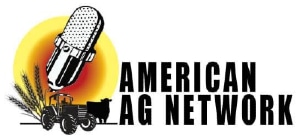WASHINGTON (April 18, 2024)¬Ý‚Äì Today, the National Cattlemen‚Äôs Beef Association (NCBA) and Public Lands Council (PLC) expressed serious concerns about the Bureau of Land Management‚Äôs (BLM) final ‚ÄúConservation and Landscape Health‚Äù rule that reimagines the agency‚Äôs requirements to manage lands for multiple uses, including livestock grazing.
“The BLM has a statutory responsibility to ensure multiple use on our nation’s public lands, which includes livestock grazing. It is extremely concerning that this rule makes serious additions to the leasing structure for federal lands without authorization or direction from Congress. Changes that aren’t based in law not only compromise the security of grazing on the landscape but make cohesive management much more challenging,” said NCBA President and Wyoming rancher Mark Eisele. “Ranchers have always and will always be serious partners in conservation and sensible land management but after a year of feedback from agricultural organizations and local stakeholders, BLM has decided to move forward with the most concerning parts of this proposal.”
The final rule runs counter to the agency‚Äôs multiple use mandate under the Federal Land Policy and Management Act of 1976 (FLPMA). According to FLPMA, the BLM is required to balance the multiple uses of public lands including recreation, energy, mining, timber, and grazing. The ‚ÄúConservation and Landscape Health‚Äù rule rearranges agency priorities by putting a new, single use on equal footing with long established uses that Congress explicitly directed. ¬ÝThe rule also places an outsized focus on the use of restrictive Areas of Critical Environmental Concern (ACEC) designations that have compromised land and water health across the West. The result is a framework that gives the BLM more restrictive land management, increased conflict on the landscape, and an increased difficulty in delivering on the agency mission and programs to stakeholders across the West.
‚ÄúThe work ranchers and permittees do every day is conservation and crucial to landscape health across the West. Our priority continues to be defending grazing across the West, and despite our repeated warnings to the BLM, the agency is forging ahead with a rule that threatens their ability to make sure even the most basic of functions can be delivered in a timely way,‚Äù said PLC President Mark Roeber, a Colorado rancher and federal grazing permittee. ¬Ý‚ÄúThe devil is in the details and what we‚Äôve seen so far is a rule that makes engagement in sage grouse discussions and others so much more complicated. The timing of this rule disenfranchises permittees who are working to be good partners and engage in other conservation efforts by increasing uncertainty and liability from extremists who only want to bully livestock producers off of working landscapes.‚Äù
NCBA, PLC, and more than 60 state and national agricultural groups¬Ý¬Ýto the BLM highlighting concerns that this rule would upend the relationship between federal agencies and grazing permittees, opening the door for public lands grazing to be removed from the land entirely. Federal rangelands generate more than $3 billion annually in ecosystem services, which amounts to more than $20 per public acre of land grazed by cattle or sheep. When accounting for appropriated tax dollars and grazing fees paid by ranchers, that‚Äôs a net return of more than $19 on each grazed acre. Ecosystem services like wildfire mitigation, cutting down on invasive species, sequestering carbon, improving wildlife habitat, and preserving open green space for recreation are essential contributions of the Western ranching industry ‚Äì not to mention the $2.1 billion in economic output attributable to livestock grazing on BLM land.


